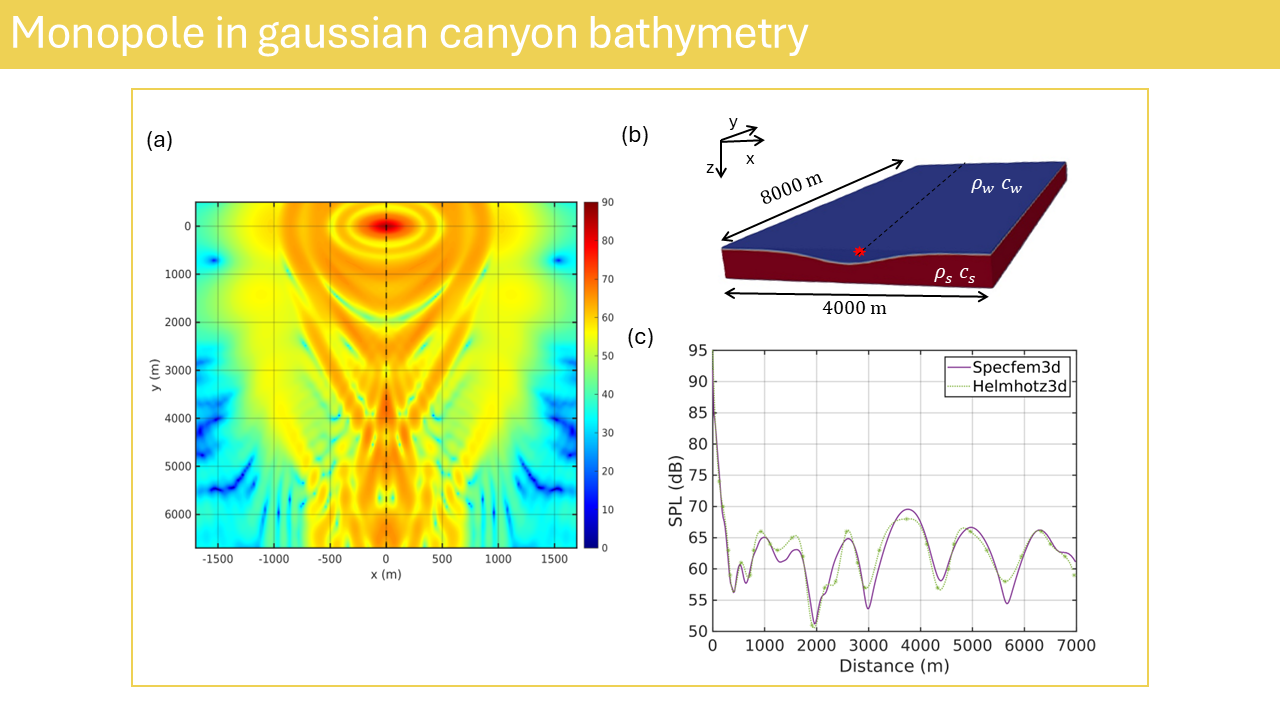Generation and propagation of anthropogenic underwater noise
Ocean Sciences, Modeling
Research area
Underwater noise pollution is a growing environmental concern, as it significantly impacts marine ecosystems by disrupting the behavior and physiology of aquatic species.
Since different species are sensitive to different frequency ranges, it is crucial to identify major noise sources and characterize their acoustic emissions.
Numerical modeling of sound propagation in the marine environment enables the assessment of anthropogenic noise impact and the development of mitigation strategies.
Project goals
This project aims to model and simulate sound propagation in marine environment in presence of real acoustic sources. Principal objectives are:
- Accurate numerical reproduction of the marine environment (irregular bathymetry, coastline, shallow and deep water scenario).
- Characterization of real underwater noise sources (ship propeller, off-shore wind farm, airguns).
- Creation of detailed basin-scale sound maps to assess the impact of local anthropogenic noise to propose noise reduction strategies
Computational approach
Simulating wave propagation in real marine environments poses several numerical challenges. One of the main difficulties is achieving high accuracy while minimizing computational costs, especially when dealing with complex geometries that are reproduced through undtructured and coupled fluid-solid interactions. Specfem3D, which utilizes the spectral element method (SEM), is a promising tool due to its ability to provide highly accurate solutions with reduced computational demands. Moreover, we are comparing Specfem3D with two solvers based on finite difference (FD) and finite volume (FV) methods. FD methods are known for their simplicity and efficiency in structured grids but. FV methods, on the other hand, offer flexibility in handling unstructured meshes. By systematically benchmarking these solvers, we aim to establish the optimal applicability range. Overcoming these computational challenges will enable more accurate environmental impact assessments and contribute to the development of effective noise pollution mitigation strategies.
(a) SPL on the x-y plane passing through a 25Hz monopole source placed 40m below the free surface in a Gaussian Canyon bathymetry, computed with Specfem3d; (b) Gaussian Canyon geometry; (c) SPL on the y-lines x = 0, z = 30m computed with Specfem3D compared with Helmhotz solution.
Ines Addeo
University of Trieste; Istituto Nazionale di Oceanografia e di Geofisica Sperimentale
I am Ines Addeo, a 25-year-old mathematician with a strong background in both pure and applied mathematics. I earned my Bachelor's degree in Mathematics in 2020 from the University of Naples Federico II and completed my Master's in Computational Mathematics and Modelling at the University of Trieste in 2023. During my final year, I developed a strong interest in applied mathematics after years of focusing on theoretical aspects. My Master's thesis explored the fluid dynamics phenomenon of cavitation. In November 2023, I started a PhD in the *Earth science, fluid-dynamics and mathematics. Interactions and methods* program, where I focus on underwater acoustics and numerical modeling of acoustic wave propagation in real marine environments.










